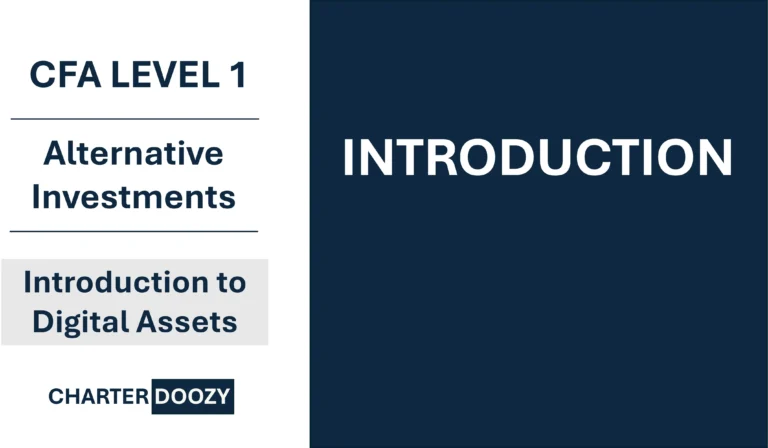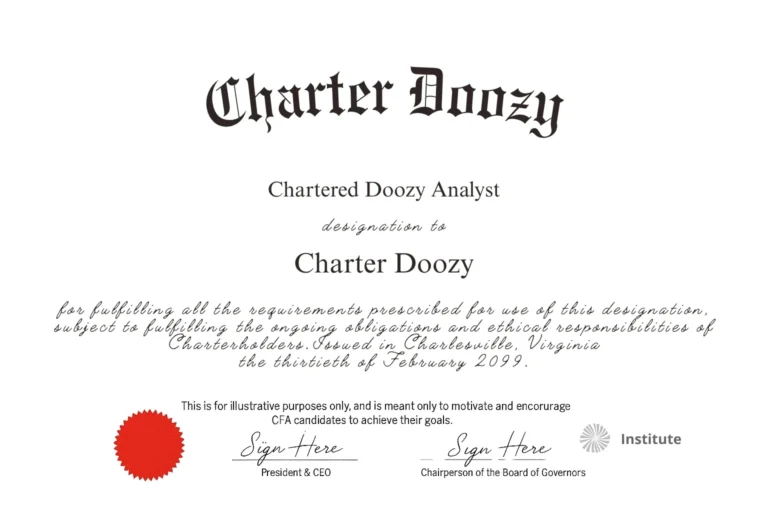Transcription
[00:00:00] Start
Okay. Welcome to your first dive into digital assets as part of the CFA level one curriculum. This is not just a buzzword section, digital assets on now real components in portfolio strategy, in risk modeling, and in market infrastructure.
As a CFA candidate, your goal here is not to become a crypto evangelist.
But to understand the investment characteristics, risks, and classifications of these instruments.
So key tips to bear in mind as we begin, one, focus on the core definitions, especially what qualifies as a digital asset. Two, master the comparison framework. How digital assets differ from equities, bonds, and commodities.
Pay attention, number three, to the sources of volatility and risk, especially around things like custody, liquidity, and regulation. Number four, expect a question or two or three in terms of the conceptual multiple choice questions on digital assets, features all their CFA relevant applications. So this is definitely something that can come up in the exam.
Treat it serious. Stay sharp, stay focused. And remember, this is no longer really fringe finance anymore. It’s part of your exam, it’s part of the investment toolkit that you want to be building. And so, treat it as such and let’s get started.
[00:01:36] Slide 3: Big Picture Overview
Alright guys, let’s start with the big picture. Digital assets are changing the game. They’re transforming how value is stored, transferred and invested. Think of them as programmable finance. This section is all about giving you a solid foundation in terms of what digital assets actually are. Why they matter and why they’re now part of the CFA curriculum.
As the investment landscape evolves, new products, new risks, and of course new opportunities are emerging and we need to understand them, heads up a bit of warning. There’s a lot of jargon, there’s a lot of terminology that you do need to understand in this section. Unfortunately, it’s one of those things where the curriculum has to start somewhere.
And so as you learn some of these terminologies, some of these concepts, the reality is that if you’re new to these sections, well some of it requires a bit further reading down the line for it actually to sink in and make sense. And so the nature of this sort of a section is that you may have to read and re-read sections.
Really for these concepts to sink in and make sense, if that makes sense. So, a bit meta there, but yeah, you will need to really get a good grasp of these things. It is pretty technical, it’s pretty specific, but of course it’s, it’s relevant and it’s part of the journey and it’s becoming more and more a part of finance.
And so grab the opportunity and let’s dive right in.
[00:03:14] Slide 4: What Are Digital Assets?
Alright, so what exactly are digital assets? In simple terms, they’re cryptographically secured digital representations of value or rights. Okay, so what is cryptographically? It sounds scary, but what it means in simple terms, if you think of the word cryptography, it’s a fancy digital lock. So this just means that the digital assets are protected using complex codes.
So that they can’t easily be copied, faked, or stolen. You can just think of it as using a digital vault with a super strong password. The second key part there to know is digital representation of value or rights. If you think of gold maybe as a physical store of value, well this is a digital store of value and that’s basically what underlies, these digital assets.
They’re stored on what are known as distributed ledgers, otherwise known, or you can think of blockchains, these assets are programmable. So what that means is that the rules for how they behave are actually, built directly into the code. So if you think of in terms of how they’re transferred, how they’re accessed, things like that, that is all encoded upfront, into the code itself.
Examples of digital assets would include cryptocurrencies like Bitcoin, tokenized versions of real world assets, stable coins, and non fungible tokens, otherwise known as NFTs. And of course, we’re gonna get into all of these as we go along.
[00:04:53] Slide 5: Types of Digital Assets (Overview)
All right. We’re now gonna talk about the types of digital assets in a bit more detail. So digital assets obviously come in many flavors. You’ve got cryptocurrencies first up, like Bitcoin and Ether. So these are digital cash effectively. Then there are stable coins, which are usually pegged to Fiat currencies or the regular currencies that we’re used to the US dollar, the Canadian dollar, Swiss Franc the Euro, Great British pound. And the reason for them being pegged often is to reduce volatility in the underlying digital asset. Tokenized real assets -these represent ownership of things often in the real world like real estate or art. Then you’ve got utility tokens, and they’re more used to access services on digital platforms.
So you can think of it almost like ticketing. And finally, we’ve got NFTs. And these are unique tokens representing ownership of specific items like perhaps digital art or collectibles.
[00:05:59] Slide 5b: Digital Asset Investments
Okay, now let’s take a high level look at the main types of digital asset investments and how they differ in structure, accessibility, and risk. So take a look at this table and you’ll see we can broadly split digital assets into two buckets, direct and indirect exposure. So starting with direct investments, under direct investments, the investor holds the asset.
So, for example, a direct crypto purchase means buying and storing tokens like Bitcoin or Ethereum in a personal wallet. So anyone can do this, but obviously the risk is high, especially if the key, which the keys is what actually allows entry into that wallet get lost or stolen. Well, you’re gonna be locked out and unable to access those, assets and those investments.
Staking or yield farming, which we’ll get into a little bit later. It allows investors to earn rewards for locking up tokens so it’s accessible to moderately experienced users, but it carries elevated risk, especially smart contract and protocol risk, which again, we’ll get into some of these things a bit later.
And, NFTs or non fungible tokens are digital collectibles you buy in a marketplace. These are easy to access, but again, come with very high risk due to illiquidity hype cycles and valuation uncertainty.
So, moving now to the indirect investments. Indirect investments don’t involve owning the underlying tokens directly.
Instead, you gain exposure through traditional wrappers.
So ETFs and trusts provide regulated access to crypto exposure. So these are great for ease of use, but again, they carry risk, moderate risk due to the underlying nature on the volatility and some of the other risks in terms of the underlying assets.
Futures and options, these are gonna be high risk.
These are now leveraged instruments, so you’re adding leverage on top of high volatility. That’s obviously going to introduce very high levels of risk, usually reserved for institutional or advanced traders.
Crypto stocks. These include companies like Coinbase, or Riot Blockchain, which offer crypto exposure via equity markets.
These are easier to buy. You would buy them over the regular exchange and would carry moderate levels of risk.
Crypto hedge funds are managed portfolios. With broad crypto exposure, they’re high risk and typically, limited to accredited or sophisticated investors.
And lastly, VC Venture Capital Private, deals involve early stage investments in crypto startups.
They’re, again, high stakes bet that require accreditation and come with very high levels of risk.
So to wrap it up, as you can see, digital asset investment. They vary widely in accessibility as well as in risk. The key is matching the structure to your strategy, to your risk tolerance and the regulatory constraints of the portfolio.
So understand this landscape. It’s gonna be essential for any serious investor now and going forward, and obviously as a CFA candidate, again, navigating the future of finance, these concepts are really, really important.
[00:09:40] Slide 6: Why Digital Assets Matter
Okay, so digital assets, why should we care? First up, the market is growing and it’s growing fast, both in terms of retail as well as institutional players are getting involved in the space. It’s becoming very relevant and of course that’s filtering through into the CFA curriculum, which is great.
Secondly, digital assets enable real financial innovation. For example, 24 7 trading, fractional ownership of assets and global accessibility.
Third, they offer diversification, and that’s an important word of course in terms of portfolio management. If you think of the efficient frontier, having diversified assets in the universe of investible assets pushes up that efficient frontier, which basically means investors, for a fixed level of risk, can achieve a better level of return.
Or said differently, for the same level of return, can access that at lower levels of risk. And of course, that’s obviously beneficial.
And the reason for that, non correlation or that diversification, often has got to do with the profile of returns, which don’t always correlate with the traditional asset classes.
And those are basically the advantages and the reasons why we’re studying digital assets or what makes them attractive.
On the flip side, of course, come a bunch of risks. These would include quite high levels of volatility. There’s a lot of regulatory uncertainty in the early days of this asset class and as it’s being developed.
And of course technological vulnerabilities, which we’ve seen, quite a number of those.
And so yes, digital assets, quite an exciting space. Quite a risky space. So this is really a high opportunity high risk space.
[00:11:32] Slide 7: Evolution of the Asset Class
So the digital asset journey really began in 2009 with Bitcoin, which introduced for the first time a decentralized peer-to-peer money. So decentralized: it’s not reliant on a central bank or a government to control that money and to print it and put it into circulation, and peer to peer: the direct transfer between two individuals of value, again, bypassing a central authority in terms of that currency.
From there, we saw the rise of Ethereum. Ethereum enabled not just this decentralized peer to peer money, but for the first time smart contracts and entire decentralized financial ecosystems. Over time, the focus expanded from money to programmable finance and token economies.
And today, digital assets are entering the mainstream more and more with products like ETFs, institutional custody and as more formal regulation enters the space, we will see more and more products coming into the mainstream in the space. So this is really no longer a fringe phenomenon.
[00:12:47] Slide 8: Digital Assets in the CFA Curriculum
Now you might be wondering why is this in the CFA curriculum? Well, digital assets sit under the alternative investment sections and are becoming increasingly relevant in portfolio construction, in risk management, and in due diligence. So whether you’re building models, advising clients, or managing funds, you’ll need to understand how these instruments work and how to assess them.
And the curriculum now reflects what’s happening in real markets.
[00:13:21] Slide 9: Key Takeaways
All right. Let’s pause and recap the essentials that we’ve covered so far. Digital assets are blockchain based representations of value. They take many forms, tokens, coins, stable coins, NFTs. They combine finance and technology into a new asset class. And finally, understanding digital assets is now a critical skill.
For any forward looking finance professional, and hopefully that includes you. So that really sums up this introductory section.
[00:14:00] Slide 10: Practice Question 1
Okay. Let’s jump into some practice questions and test your understanding. Firstly, which of the following best describes a digital asset? Take a moment and think it through.
[00:14:16] Slide 11: Answer 1
The correct answer is C, a cryptographically
secured digital representation of value. That’s your key phrase right there. Cryptographically, secured and digital value.
[00:14:33] Slide 12: Practice Question 2
Next up, what was the significance of Bitcoin’s launch in 2009?
[00:14:44] Slide 13: Answer 2
The answer is D. It created the first decentralized digital asset on a blockchain. Not a stable coin, not a utility token. Bitcoin was the beginning of decentralized trustless value exchange.
[00:15:02] Slide 14: Practice Question 3
Let’s try another. which of the following is not a type of digital asset?
[00:15:11] Slide 15: Answer 3
All right. This is a bit of a trick question. The correct answer is, B, real estate investment Trusts or REITs. REITs are traditional financial products. They’re not native to blockchains. Even if some REITs are actually being tokenized today.
[00:15:32] Slide 16: Practice Question 4
Last one for now. Why are digital assets considered important in modern portfolios?
[00:15:42] Slide 17: Answer 4
The best answer here is probably C. They provide diversification and access to new markets, not because they’re risk free, and definitely not because they’re regulated like bonds. It’s the potential for alternatives, return profiles, which make them attractive to investors.
[00:16:03] Slide 18: You Mastered
Okay, great job. Let’s recap what we’ve covered and what you have hopefully mastered. First up, what digital assets are, then why they matter in modern finance, the major types and use cases. We looked at some of the digital asset investments and how the asset class has evolved
from the early days in 2009 with the advent of, Bitcoin right up until today. So thank you very much and we will see you in the next video.

Why the Smartest Investors Are Betting on Invisible Assets
Invisible. Untouchable. Borderless. Unregulated. And yet… commanding billions of dollars, thousands of developer hours, and a growing slice of the world’s financial mindshare.
We’re talking about digital assets—Bitcoin, Ethereum, tokens, NFTs, stablecoins, and the emerging financial scaffolding surrounding them. To many, they look like a speculative fad. To others, a revolution that doesn’t ask for permission.
So here’s the question: What if the most disciplined, risk-aware, long-term-minded investors—the ones trained in discounted cash flow and dividend payout ratios—are starting to see something the skeptics don’t?
If you’re a CFA candidate or practitioner, it’s no longer enough to dismiss digital assets. You have to understand them.
What Even Are Digital Assets?
Let’s strip this to the core: Digital assets are records of ownership that exist on a blockchain or distributed ledger. No paper. No physical vault. Just code.
But that code can represent anything: money (like Bitcoin), equity (like tokenized shares), rights (like governance tokens), or uniqueness (like NFTs). Unlike traditional ledgers, these are shared, tamper-resistant, and visible to all.
The result? We can create assets, transfer them, verify them, and automate their use—without needing a trusted third party.
This isn’t just a technological curiosity. It’s a new model for asset origination, exchange, and control.
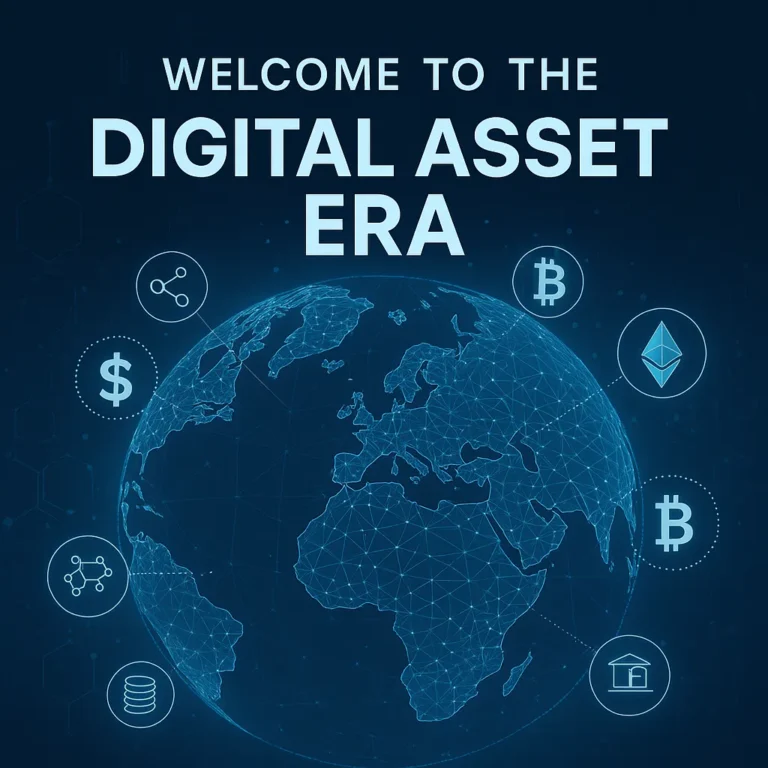
Distributed Ledger Technology: Why It Matters More Than Crypto Prices
You don’t need to care about Dogecoin to care about distributed ledger technology (DLT). DLT is the infrastructure. It’s what allows decentralized applications (dApps), smart contracts, and cross-border payments to work without intermediaries.
Unlike a centralized database owned by a bank or exchange, a distributed ledger replicates its data across all participating nodes. That makes it:
Transparent (anyone can verify transactions)
Immutable (once data is confirmed, it can’t be tampered with)
Decentralized (no single point of failure or control)
Think about how many legacy systems in finance still rely on overnight batch processing. DLT blows that up. Instant finality. Shared truth. No reconciliation needed. That’s why JPMorgan, BlackRock, and the BIS are quietly investing.
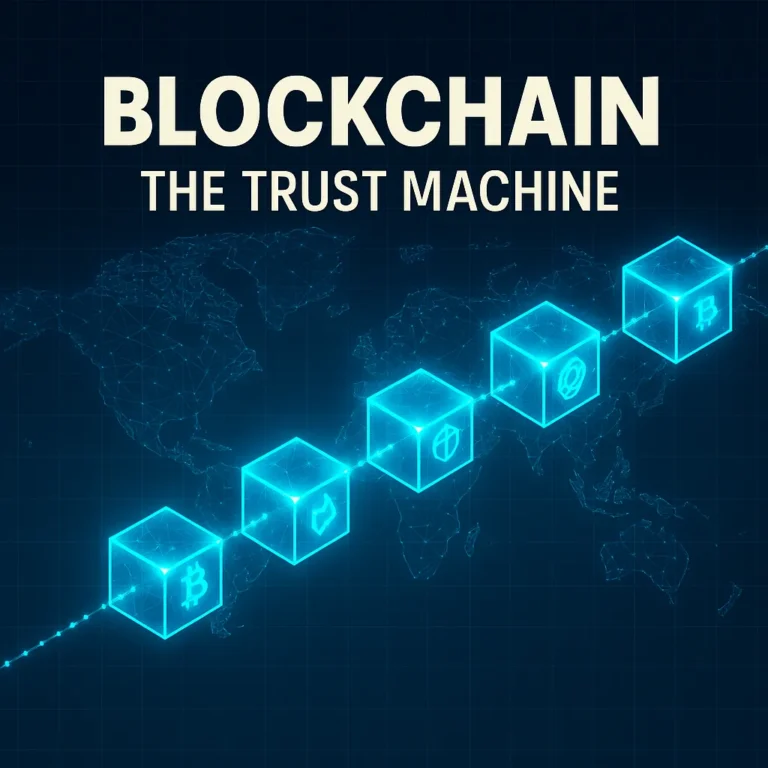
Investment Features That Defy Traditional Playbooks
No Cash Flows, Just Code
Digital assets often lack fundamentals. No earnings. No balance sheets. No regulatory filings. What they have instead are:
Code-based monetary policy (e.g., Bitcoin’s fixed 21M supply)
Network effects (more users = more value)
Open-source governance (controlled by community votes or contributors)
Returns are extreme. Volatility is wild. Yet for some, these assets offer:
New diversification angles (low correlation—sometimes)
Access to global liquidity
Exposure to technological adoption curves
If you think about crypto like a currency, it’s volatile. If you think about it like venture capital, it starts to make more sense.
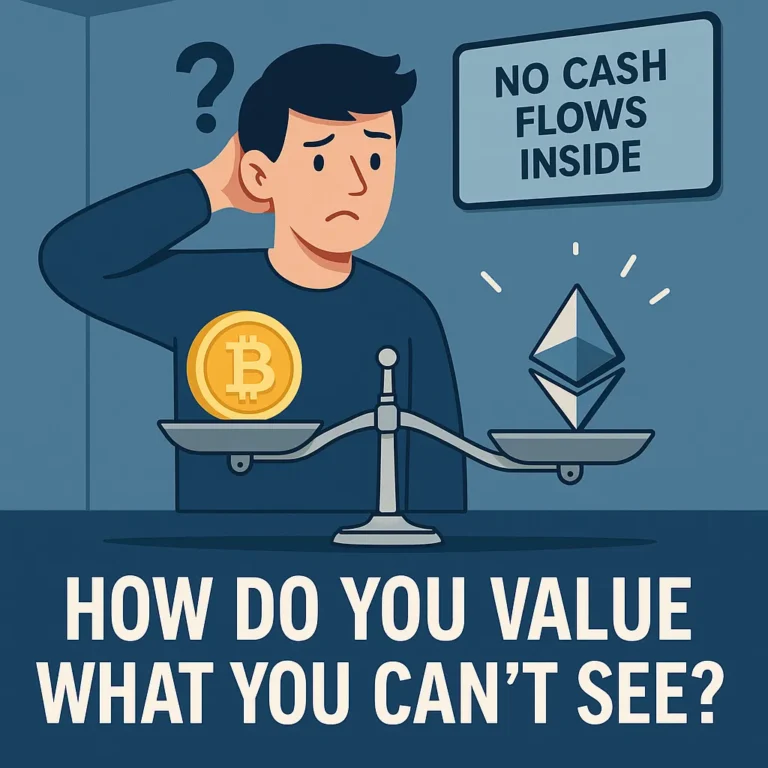
The Menu of Digital Asset Investment Forms
You don’t have to open a MetaMask wallet or self-custody tokens to invest.
Institutional and retail investors alike now access digital assets through:
ETPs and ETFs (e.g., spot BTC ETFs, ETH futures)
Coin trusts (e.g., Grayscale)
Crypto hedge funds
Thematic equity exposure (e.g., companies building blockchain infrastructure)
Direct tokens (held via centralized or decentralized exchanges)
Each comes with trade-offs: cost, complexity, custody, and compliance. But the landscape is maturing fast. Risk-adjusted access is becoming more achievable.
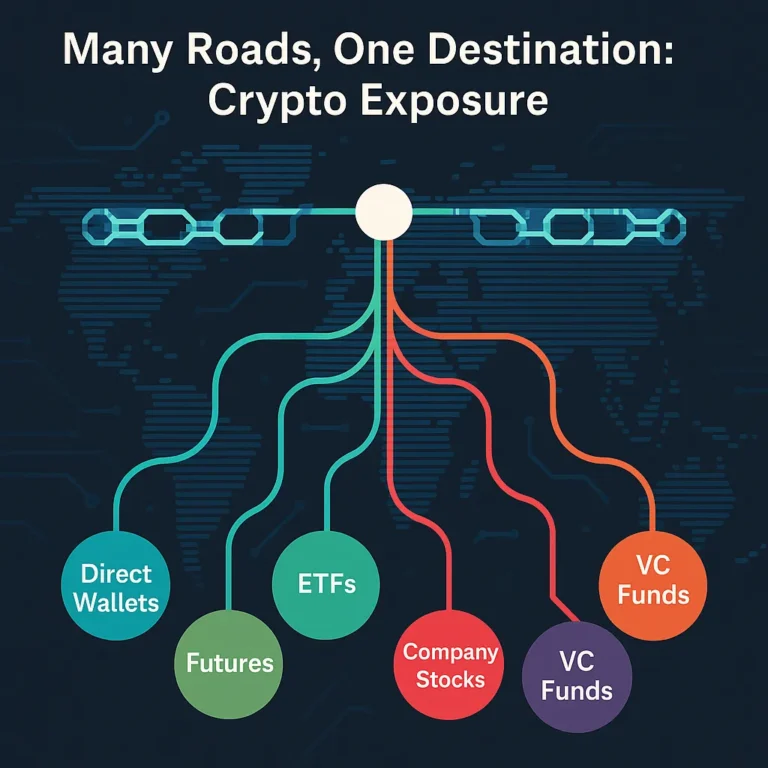
The New Risk/Return Equation
Understanding the Shape of the Curve
Return: Potentially exponential. Some tokens rise 10x in a year. Others go to zero.
Risk: Not just market or liquidity risk, but smart contract bugs, rug pulls, regulatory rug pulls, and custody loss.
Volatility: Off the charts. Daily swings of 5%+ are common.
Diversification: Often uncorrelated in quiet times. Often highly correlated during panic.
Does this mean digital assets are inherently bad investments? Not at all. But they are different, and they demand a different framework.
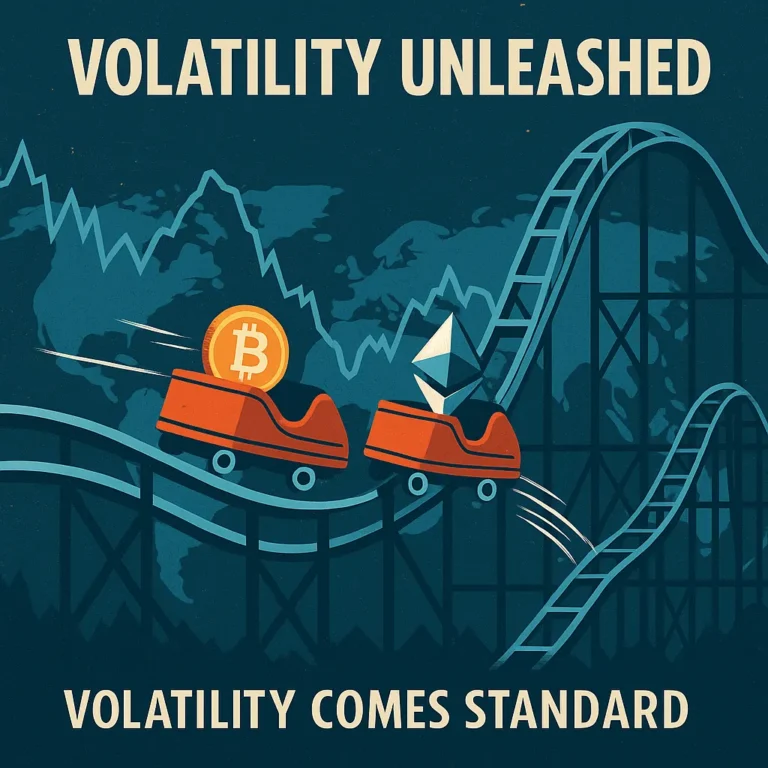
So, Do They Belong in a Portfolio?
Depends.
For long-term investors with high risk tolerance and strong rebalancing discipline, digital assets may enhance Sharpe ratios, provide access to innovation, or offer protection against fiat dilution.
But for short-term, overconfident, or overexposed investors, they can amplify fragility.
CFA candidates must understand both sides. How to measure the volatility. How to calculate correlations. How to talk about digital assets without falling into hype or cynicism.
This isn’t about prediction. It’s about preparation.
The Real Test: Intellectual Flexibility
The real challenge isn’t the math. It’s the mindset.
Digital assets force us to confront what we think we know:
Is an asset valid if it has no cash flows?
Can decentralization replace institutions?
Should monetary systems be open-source?
You don’t have to be a maximalist to take them seriously. You just have to be honest about the direction the world is going.
Financial literacy now includes blockchain literacy.
Closing Thoughts: Learn to Think in New Asset Classes
Whether digital assets will replace or just complement traditional finance remains to be seen. But here’s what’s certain:
They’re not going away.
They’re influencing how finance is designed and delivered.
CFA professionals are being asked about them—by clients, colleagues, and committees.
So the real question isn’t should you study digital assets. It’s: Can you afford not to?
Next Steps
If this sparked your curiosity, dive deeper into topics like:
Tokenization of real-world assets
DeFi protocols vs traditional intermediaries
Crypto portfolio construction techniques
Regulation and valuation models
Because in a world where the most valuable assets are invisible—your insight becomes your edge.
